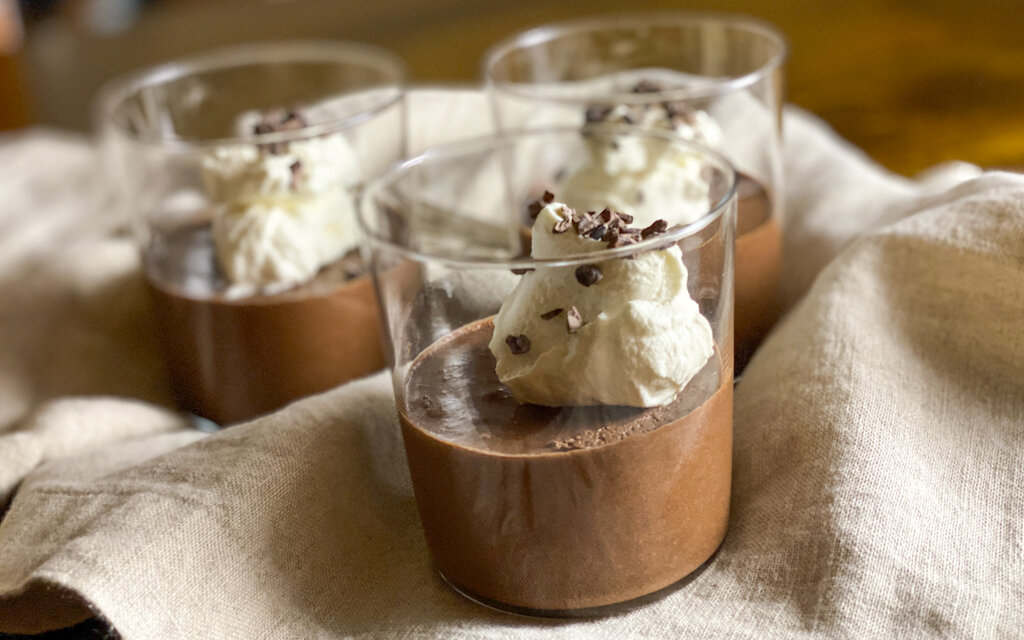The first time I had chocolate mousse was when I was five or six years old and my dad took me out to lunch — just the two of us — at a fancy French restaurant. I don’t know what the restaurant was called, but it was on the same plot of land in Los Angeles where Eataly now stands, in Century City. The restaurant was cozy, dark, and — to my five-year-old mind — terribly elegant. I wore white gloves.
I don’t remember most of what we ate, only that I couldn’t wait for dessert. We were going to have a chocolate moose, my dad told me. How fantastic — a chocolate moose! An edible Bullwinkle!
And then it landed, and it was something much better than a moose: It was a Champagne coupe filled with something chocolate, crowned with a dollop of whipped cream and topped with a candied violet.
A sugar-coated tiny purple flower you could eat! This was the best thing ever. And that mousse! In that Champagne glass! I still remember the sensation, the flavor, the mouthfeel: It was like eating a rich, chocolate cloud. Heaven.
Recently, my extreme bouts of culinary adventurism have been punctuated with longings for nostalgic French foods. Onion soup. Quiche. Chocolate mousse.
Anyone can make chocolate mousse, but you do need the right recipe. I like a classic one, which is basically melted chocolate with egg yolks mixed in, folded gently into egg whites. Chill it for three hours, and dessert is yours.
The nice thing is you can dress it up or dress it down for any mood. Spoon it into Champagne coupes if you’re feeling fancy, or jelly jars if the vibe you want is chill. Some people like to leave it in a big bowl and serve it from that, or just give everyone a spoon. You could use pretty tea cups, or ramekins or custard cups — whatever you have.
Make the mousse as sweet or dark chocolatey as you like. We’ve based our recipe on two 3.5 ounce bars of chocolate; choose the one you most love to eat. If you’re a 70 or 72% cacao person, use that. If you like sweeter (60%) or darker, adjust accordingly. My chocolate of choice is 85%. That might be a little un-desserty for dessert, so I use one 72% bar and one 85% bar: That’s perfect for me.
You can really get creative in that melting bowl of chocolate. I like to add orange liqueur, such as Grand Marnier. David Lebovitz, whose chocolate mousse proportions informed our recipe, favors Chartreuse. Julia Child called for strong brewed coffee as well as orange liqueur (which she whipped into the egg whites). Cognac could be nice, or Turkish coffee kissed with cardamom. You can use vanilla or almond extract, or even peppermint (just a touch).
Serve it naked for the full-on, chocolate-forward mousse experience, or top it with whipped cream, lightly sweetened or not, depending on how sweet you went with the mousse.
And then the (totally optional) final flourish, geared to your audience or expressive of your mood. Multi-colored or chocolate sprinkles! Slivered candied orange peel or cacao nibs! Dried rose petals! A candied violet!
If you love this recipe as much as I do, you’ll want to keep a couple of extra chocolate bars on hand for whenever you might want to conjure something special with very little effort. As long as you have four eggs, you’ll be good to go.
Did you enjoy this story? Read about who we are and what we do.


